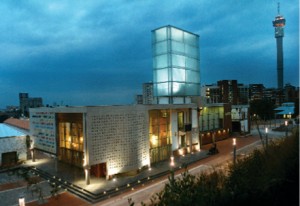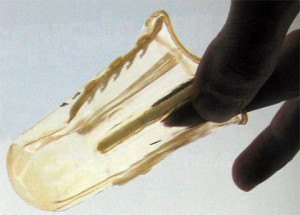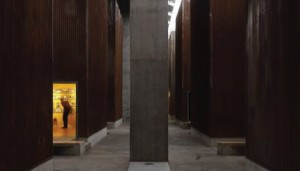Although I’m not in a position to write an adequate tribute to South African leader Nelson Mandela, with his passing last week I want to recall some design activist projects from South Africa and invite readers to share their own.
Here are a few of my favorites:
 The 10 x 10 Low Cost Housing Project by Design Indaba conference founder Ravi Naidoo, to address inadequate housing in Cape Town (video here). Ten international architects donated 10 hours of time to team up with a South African practice to develop a housing prototype that costs less than $7000 to produce.
The 10 x 10 Low Cost Housing Project by Design Indaba conference founder Ravi Naidoo, to address inadequate housing in Cape Town (video here). Ten international architects donated 10 hours of time to team up with a South African practice to develop a housing prototype that costs less than $7000 to produce.
Another example is Architecture for Humanity’s competition for a soccer field and related facilities for kids in Somkhele, South Africa which has one of the world’s highest rates of AIDS. The plan included the formation of a girls league to be coached by nurses who will use the opportunity to educate about safe sex.
 South Africa Constitutional Court, opened in the Old Fort Prison Complex that had housed many key anti-apartheid campaigners such as Nelson Mandela, Mohandas Gandhi, and Winnie Mandela (archive article from Construction Week). The building contains interior and exterior features that represent ideas of justice and while echoing the past by preserving pieces of the prison. Transparency in the design is a key part of the court operation. This case encompasses both past shame and future aspiration. The project was a joint venture of South African design firms OMM Design Workshop and Urban Design Solutions.
South Africa Constitutional Court, opened in the Old Fort Prison Complex that had housed many key anti-apartheid campaigners such as Nelson Mandela, Mohandas Gandhi, and Winnie Mandela (archive article from Construction Week). The building contains interior and exterior features that represent ideas of justice and while echoing the past by preserving pieces of the prison. Transparency in the design is a key part of the court operation. This case encompasses both past shame and future aspiration. The project was a joint venture of South African design firms OMM Design Workshop and Urban Design Solutions.
The Rape-aXe condom, developed by a retired South African health worker Sonnette Ehlers, concerned about the high rate of rape in South Africa, that snags unwanted intruders with plastic teeth which require surgery to remove. Although there’s no evidence that this prototype ever went into production, it certainly is a provocative idea.
South Africa’s Red Location Museum, by Neoro Wolff Architects, is dedicated to the struggle against apartheid, acknowledging that there is no single truth about apartheid, only many individual stories. Instead of channelling visitors through a single narrative history of apartheid, the inside the industrial and cavernish museum contains a grid of “memory boxes” (pictured below) that hold a range of stories about the fragmented past.
And this last example seems to capture what I’ve heard most in tributes to Mandela. That he was able to embrace the myriad “truths” of apartheid and move people forward on by virtur of this acceptance.
Do you have a good example to add to this list? Let us know in the comments.
—-
If you’re interested in sustainable design, conduct research on it or teach it, you might be interested in Sustainable Design Thursdays. This week the subject is finding a job in sustainable design through “intrapreneurship” and other meands.


